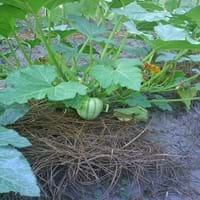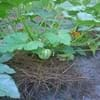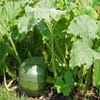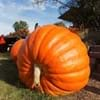Life Span
Annual
Perennial
Origin
North America, Mexico, Central America
Asia, Europe, North America
Types
Summer Squash, Winter Squash
Black Ash, Blue Ash, California Ash, Carolina Ash, European Ash
Number of Varieties
Not Available
Habitat
Cold Regions, Subtropical climates
Forest edges, Hillside, Woods
USDA Hardiness Zone
Not Available
3-9
Sunset Zone
A1, A2, A3, H1, H2, 1a, 1b, 2a, 2b, 3a, 3b, 4, 5, 6, 7, 8, 9, 10, 11, 12, 13, 14, 15, 16, 17, 18, 19, 20, 21, 22, 23, 24
9, 12, 13, 14, 15, 16, 17, 18, 19, 20, 21, 22, 23, 24
Habit
Vining/Climbing
Oval or Rounded
Flower Color
Yellow, Orange, Dark Green
White
Flower Color Modifier
Bicolor
Not Available
Fruit Color
Orange, Dark Green, Ivory
Not Available
Leaf Color in Spring
Lemon yellow
Dark Green
Leaf Color in Summer
Green, Dark Green
Dark Green
Leaf Color in Fall
Green, Dark Green
Dark Green
Leaf Color in Winter
Not Available
Dark Green
Leaf Shape
Arrowhead
Oblovate
Plant Season
Summer, Fall
All year
Sunlight
Full Sun
Full Sun, Part sun
Growth Rate
Very Fast
Fast
Type of Soil
Loam, Sand
Loamy, Sandy
The pH of Soil
Neutral
Acidic
Soil Drainage
Well drained
Well drained
Bloom Time
Indeterminate
Late Spring, Spring
Tolerances
Drought
Drought, Pollution, Soil Compaction
Where to Plant?
Container, Ground
Ground
How to Plant?
Seedlings
Grafting, Seedlings, Stem Planting, Transplanting
Plant Maintenance
Medium
Medium
Watering Requirements
Keep ground moist, Requires regular watering, Requires watering in the growing season, Water Deeply, Water when top layer of soil becomes dry
Does not require lot of watering, Medium, Prefer drip-irrigation instead of Over-head watering
In Summer
Lots of watering
Lots of watering
In Spring
Ample Water
Moderate
In Winter
Average Water
Average Water
Soil Type
Loam, Sand
Loamy, Sandy
Soil Drainage Capacity
Well drained
Well drained
Sun Exposure
Full Sun
Full Sun, Part sun
Pruning
Not Available
Prune in winter, Prune prior to new growth
Fertilizers
Compost
All-Purpose Liquid Fertilizer
Pests and Diseases
Downy mildew, Fungal Diseases, Red blotch
Bark splits, Crown gall, Epicormic Sprouting, Woodpecker feeding
Plant Tolerance
Drought
Drought
Flower Petal Number
Single
Single
Foliage Texture
Coarse
Medium
Foliage Sheen
Matte
Glossy
Allergy
Skin irritation, Skin rash
Not Available
Aesthetic Uses
Not Available
Not Available
Beauty Benefits
Not Available
Not Available
Environmental Uses
Food for birds, Food for insects
Air purification
Medicinal Uses
anti-cancer, Bone strength, Fiber, Indigestion, Nutrients, Weight loss
Fever, Liver problems
Part of Plant Used
Fruits
Leaves, Stem
Other Uses
Used As Food, Used for its medicinal properties
Used as Ornamental plant
Used As Indoor Plant
No
No
Used As Outdoor Plant
Yes
Yes
Garden Design
Edible, Herb / Vegetable, Vine
Shady Tree, Showy Tree
Botanical Name
CUCURBITA pepo 'Delicata'
Fraxinus
Common Name
Peanut Squash, Squash
Ash Tree
In Hindi
देलिकाता स्क्वाश
राख पेड़
In German
Delicata Squash
Esche
In French
Delicata Squash
Frêne
In Spanish
Delicata Squash
Fresno
In Greek
Delicata Σκουός
δέντρο Ash
In Portuguese
Delicata Squash
Freixo
In Polish
Delicata Squash
Jesion
In Latin
delicata Cucurbitae
Fraxinum
Phylum
Spermatophyta
Anthophyta
Class
Magnoliopsida
Magnoliopsida
Order
Cucurbitales
Lamiales
Family
Cucurbitaceae
Oleaceae
Clade
Angiosperms, Eudicots, Rosids
Angiosperms, Asterids, Eudicots
Tribe
Not Available
Oleeae
Subfamily
Cucurbitoideae
Not Available
Number of Species
Not Available
Importance of Delicata Squash and Ash Tree
Want to have the most appropriate plant for your garden? You might want to know the importance of Delicata Squash and Ash Tree. Basically, these two plants vary in many aspects. Compare Delicata Squash and Ash Tree as they differ in many characteristics such as their life, care, benefits, facts, etc. Every gardener must at least have the slightest clue about the plants he wants to plant in his garden. Compare their benefits, which differ in many ways like facts and uses. The medicinal use of Delicata Squash is anti-cancer, Bone strength, Fiber, Indigestion, Nutrients and Weight loss whereas of Ash Tree is Fever and Liver problems. Delicata Squash has beauty benefits as follows: Not Available while Ash Tree has beauty benefits as follows: Not Available.
Compare Facts of Delicata Squash vs Ash Tree
How to choose the best garden plant for your garden depending upon its facts? Here garden plant comparison will help you to solve this query. Compare the facts of Delicata Squash vs Ash Tree and know which one to choose. As garden plants have benefits and other uses, allergy is also a major drawback of plants for some people. Allergic reactions of Delicata Squash are Skin irritation and Skin rash whereas of Ash Tree have Not Available respectively. Having a fruit bearing plant in your garden can be a plus point of your garden. Delicata Squash has showy fruits and Ash Tree has no showy fruits. Also Delicata Squash is not flowering and Ash Tree is flowering. You can compare Delicata Squash and Ash Tree facts and facts of other plants too.





